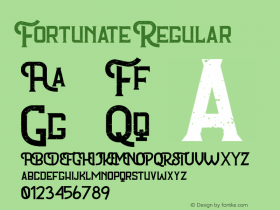
I am just back from giving a typography workshop on Monday and Tuesday at the Beyond Tellerrand. Over the course of two days I gave practical exercises book-ended by four presentations – on the selection of type, on webfonts, on the legal use of digital fonts, and Two Decades of Trajan in Movie Posters to close off the first day. Although I already give annual lectures at several art schools and colleges, this was my first ever workshop. I was equally thrilled and stressed out – especially since it also was my first time I did everything in French. Fortunately everything went more than fine, and the positive reactions from both students and teachers make me feel confident about doing more of these. One thing I always tell the students is how my research on film posters has been such a catalyst for me, opening my eyes to many cultural aspects of graphic design and typography. I started out with this series on The FontFeed, and it still is one of my favourites. So it is with pleasure that I present to you a new episode of cinematic type-geekery fresh from the multiplex.
It's always interesting to observe how working with essentially the same basic elements can result in two quite different posters. The similarities between the two years ago are merely superficial. Described by me as a marriage "between contemporary stained glass creations and the work of Piet Mondrian", the latter cleverly played with structure and colour, offsetting bright hues and solid black lines against a pristine white background. Understated yet thoughtful typography complemented the inventive, focused composition.
The exact same ingredients end up quite differently on the poster above. The structure is simplistic and doesn't seem to match any discernible grid nor logic. Because the (horribly Photoshopped) portraits are in full-colour with only the background in intense colour, they come off as dull and artificial. The typography is – almost literally – all over the place: mainstay Standard Extended is scattered over two areas in too many different sizes, in all capitals and mixed case, and in two colours black and red. When comparing the two it becomes obvious this is a far lesser design than For Colored Girls.
I am afraid I am reaching the point where I can't decide any more if Shepard Fairey's signature style has turned into a gimmick. The movie poster for Let Fury Have the Hour has all the familiar elements and symbolism in the familiar black/red/off-white colour scheme, yet unlike previous designs discussed on The FontFeed this one fails to grab me.
As far as teaser posters go, this design for Zero Dark Thirty is pretty darn perfect. The movie title in simple black Neue Helvetica Extended on a white background as well as the release month were censored with thick black stripes, an effective visualisation of the extreme secrecy the CIA operative Maya had to work under. It is just readable enough, and proves sometimes simple is best.

The August 2011 episode of ScreenFonts.
I find this exploration of the "images within letters" motif less successful. Agency was probably chosen because it is commonly used for action movies and war stories, and for its squarish features reminiscent of military typography (see also the classic ITC Machine). However the volume of the letters in this particular weight is barely sufficient to show enough of the images enclosed in their shapes. Also, having a different picture in every single letter makes the overall image too fragmented, rendering the story this poster tries to tell unintelligible.
I almost dismissed the poster for The Impossible, mentioning that someone must had missed the memo that using Trajan for inspirational movies was so last decade. Until I noticed just in time it isn't the ubiquitous film poster typeface but Weiss, an interesting alternative. Emil Rudolf Weiss found inspiration for his namesake typeface in models from the Italian Renaissance. Released by the Bauer foundry of Frankfurt in 1926, Weiss is one of the earliest contemporary serif faces with italics based on the chancery style of writing. It owes its slightly unusual appearance to the vertical strokes which are heavier at the top than at the bottom, most easily identified in the capital S. Berling by Karl-Erik Forsberg – arguably the best-known Swedish typeface – is based largely on Weiss, which also informed the design of Stefan Hattenbach's Anziano.
After witnessing Jennifer Lawrence's inexplicably shrinking head on the poster for last September's episode of ScreenFonts, now it's the opposite: Tom Cruise's head looks dangerously inflated on the poster for Jack Reacher. Compare the "big head" poster on the left with the international version on the right to notice what's wrong. Some of these trigger-happy Photoshop nuts are in dire need of lessons in human anatomy and proportions. The (intentionally?) clumsy square sans serif is TX Manifesto by Typebox.
Same story for this comically bad Spanish-language poster for Stand Up Guys. This is such a bad headstrip that the three actors look like bobbleheads. The rest of the poster is a very poor interpretation of something that vaguely refers to Saul Bass. The skyline sans appears to be one of the many styles of H&FJ Knockout.
The main poster on the other hand is a fun, stylised retro/vintage design, fake creases and damaged corners included. I like the muted rainbow stripes touching the "ground" and suggesting a road the three protagonists walk on. Representing them by their silhouettes with their names knocked out in Square Slabserif 711 nicely subverts the star quality of the actors. The narrow compact sans serif used for the movie title is a surprising choice – FF Cst Berlin East Bold from Verena Gerlach and Ole Schäfer's FF City Street Type project preserving the alphabets on the gradually disappearing original street signs in Berlin. Concentrating all the type in one area and linking it to the vertical colour stripes is beneficial to the overall composition of the poster.
Even to me who have done it for two decades now, type identification remains a rather mysterious phenomenon. The few letters on the Typography For Lawyers author, type designer and commentator Matthew Butterick sought inspiration in Heinz Hoffmann's 1908 design, which evokes the German grotesks that were workhorses of factory printing 100 years ago. It is recognisable by the blunt corners suggesting the wear and tear of rough presswork, and the subtle yet clear contrast in its strokes. Not to be confused with ITC Conduit and other DIN-like technical sans serifs.
The poster itself abstracts the rear view mirror, turning it into a strictly utilitarian graphic motif that holds the portraits of the three main characters. It is a welcome change from Hollywood's inescapable floating heads. And yes, it is impossible to have those three separate views reflected in one mirror. Get a life. ; )
The international poster reverts the "images within letters" motif described earlier on, having the title in all caps Gotham reverted out of horizontal strips with photographs. This works a lot better than the poster for Zero Dark Thirty, as the image fragments – and as a result the narrative – are much clearer. The perfectly centred car in the counter of the bottom "O" shows that a lot of attention went into the cropping and positioning of the images. The yellowed paper and smudgy edges add a nice touch.
We end on a little bit of a downer. Oh Quentin, why hast thine poster designer forsaken thou? Remember when the typography on the posters for your films was suitably gritty, or beautifully emulated pulp covers with Reporter No. 2 and blaxploitation posters with Cabarnet (the curly Caslon)?
The teaser poster for Django Unchained is passable. At first sight the stylised red and black poster looks good, yet there seems to be a discrepancy between the Saul Bass-like angular treatment of the chain and the detailed silhouettes at the bottom walking through very finely rendered grass.
The full poster expands on this style, but the typography is a terrible hodgepodge of incompatible faces. Typodermic's Chinese Rocks Xp kind of matches the angular chain, but then Neue Helvetica Extended is far too slick, and the movie title looks just plain silly, like a cartoon logo. Sorry, the intention may have been good, but the typography is seriously lacking.










